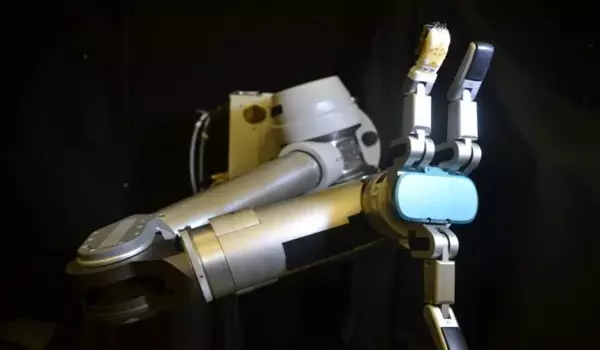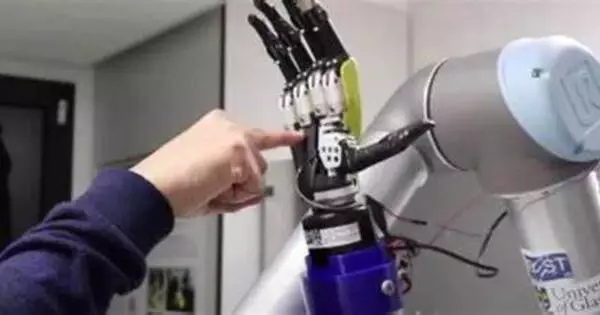A novel soft sensor developed by UBC and Honda researchers is smart, flexible, and very sensitive, opening the door to a wide range of applications in robotics and prosthetics. When placed on the surface of a prosthetic arm or robotic limb, the sensor skin provides touch sensitivity and dexterity, allowing machines to perform activities such as picking up a piece of soft fruit. The sensor is also delicate to the touch, similar to human skin, making human interactions safer and more realistic.
“Our sensor can detect a variety of forces, allowing a prosthetic or robotic arm to respond to tactile stimuli with dexterity and precision. For example, the arm can hold fragile objects like an egg or a glass of water without crushing or dropping them,” said research author Dr. Mirza Saquib Sarwar, who developed the sensor as part of his Ph.D. work in electrical and computer engineering at UBC’s college of applied science.
Our sensor can detect a variety of forces, allowing a prosthetic or robotic arm to respond to tactile stimuli with dexterity and precision. For example, the arm can hold fragile objects like an egg or a glass of water without crushing or dropping them.
Dr. Mirza Saquib Sarwar
Giving machines a sense of touch
The sensor is mostly made of silicone rubber, which is also used to create various skin special effects in films. The team’s unique design allows it to bend and wrinkle like human skin.
“Our sensor, like touchscreens, detects objects from a distance using weak electric fields.” Unlike touchscreens, however, this sensor is flexible and can detect forces within and along its surface. “This unique combination is critical to the adoption of the technology for human-contact robots,” said Dr. John Madden, senior study author and professor of electrical and computer engineering who directs UBC’s Advanced Materials and Process Engineering Laboratory (AMPEL).

The UBC team worked with Honda’s research institute, Frontier Robotics, to develop the technology. Honda has been at the forefront of humanoid robotics innovation since the 1980s, when it created the well-known ASIMO robot. It has also created walking aids and the upcoming Honda Avatar Robot.
“Dr. Madden’s lab has significant expertise in flexible sensors, and we’re happy to collaborate with this team in developing tactile sensors that can be applied to robots,” said Mr. Ishizaki Ryusuke, one of the study’s lead authors and Frontier Robotics’ chief engineer.
Practical and scalable
The researchers say the new sensor is simple to fabricate, which makes it easy to scale to cover large surface areas and to manufacture large quantities.
Dr. Madden emphasized that sensors and artificial intelligence are making machines more powerful and lifelike, allowing people to work and play alongside them more and more, but much more can be done.
“Human skin has a hundred times more sensing points on a fingertip than our technology, which makes lighting a match or sewing easier.” As sensors become increasingly skin-like, capable of detecting temperature and even injury, robots must become smarter about which sensors to pay attention to and how to respond. Sensor and artificial intelligence advancements will need to work in tandem.”










